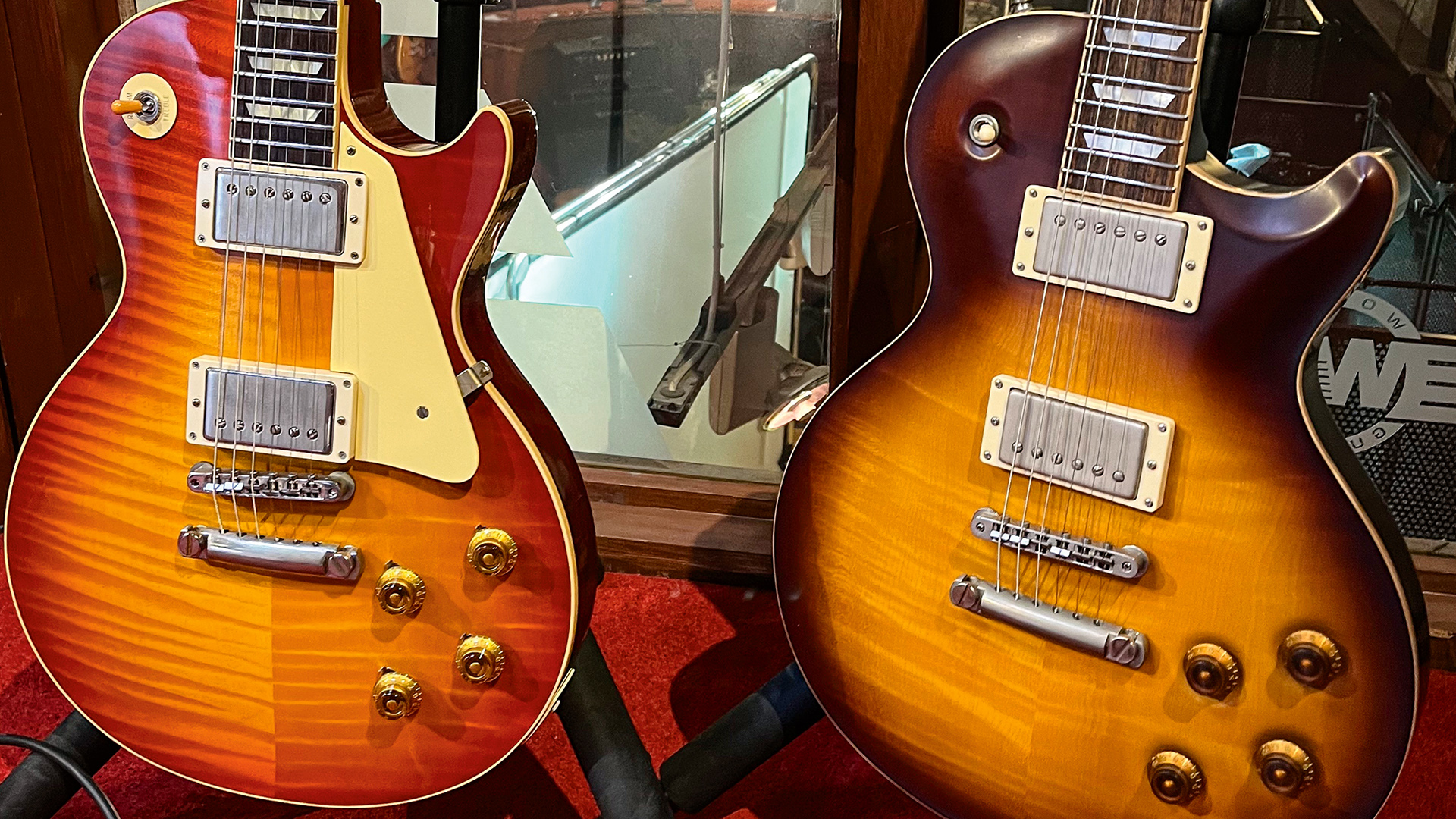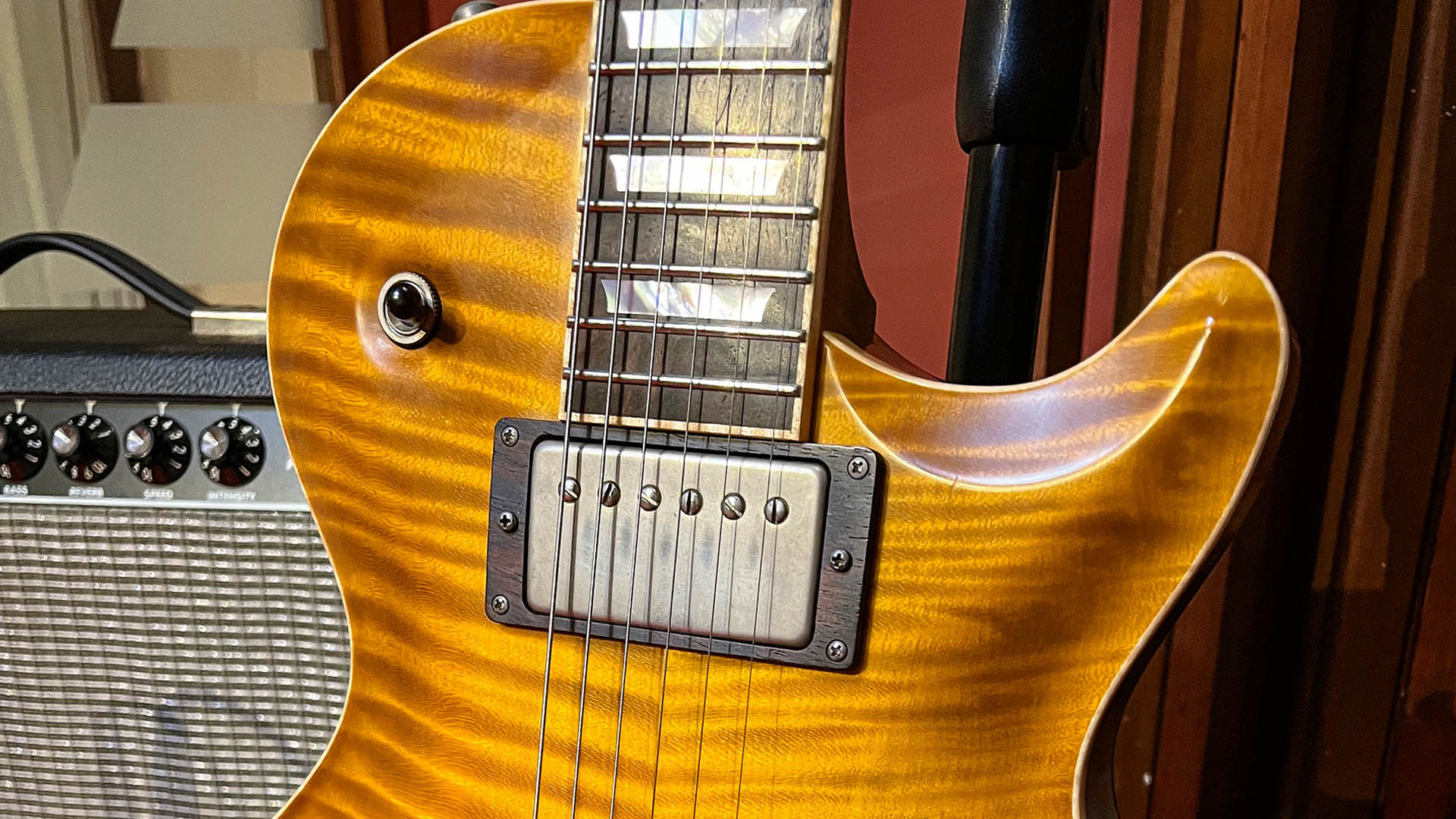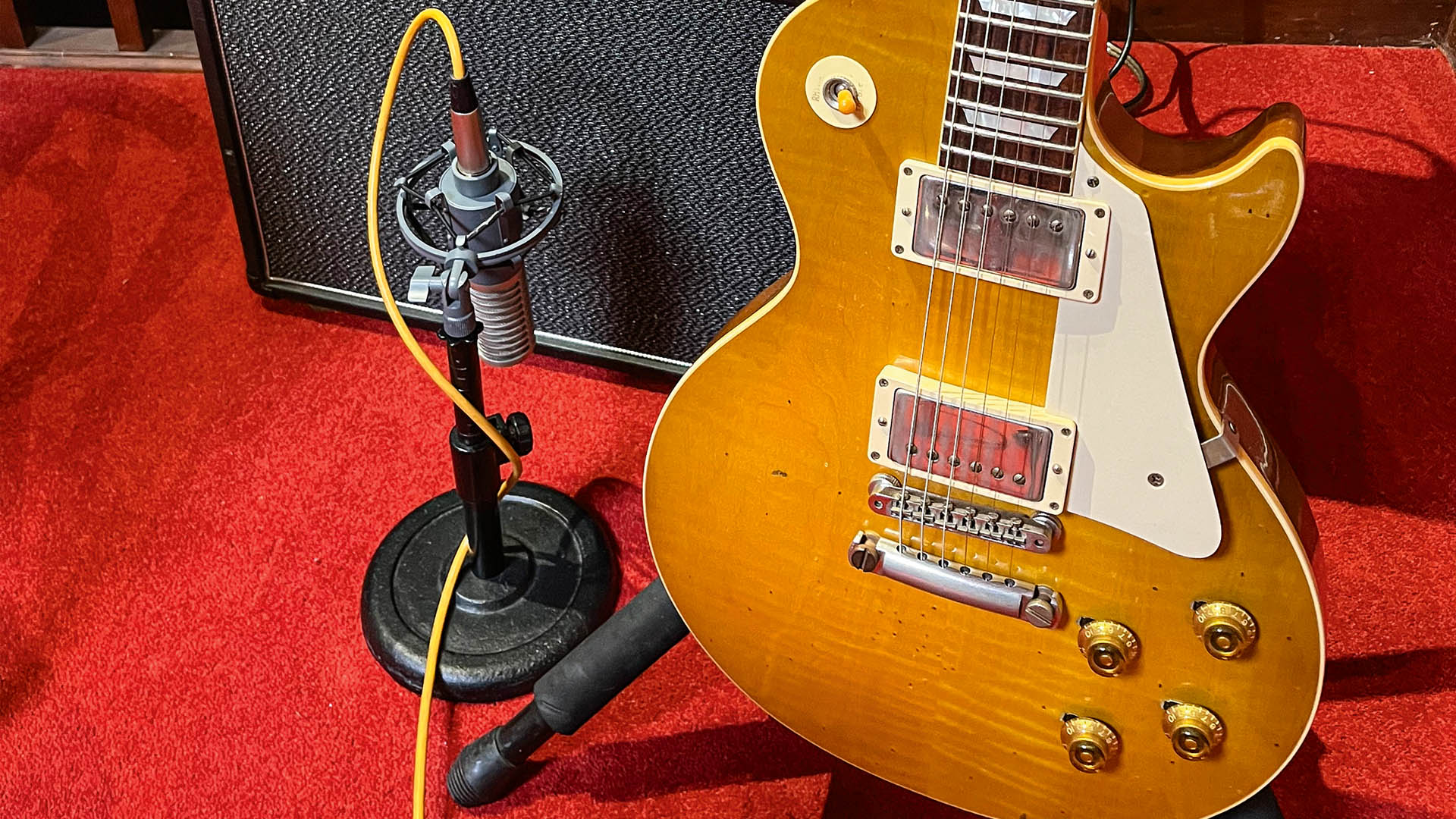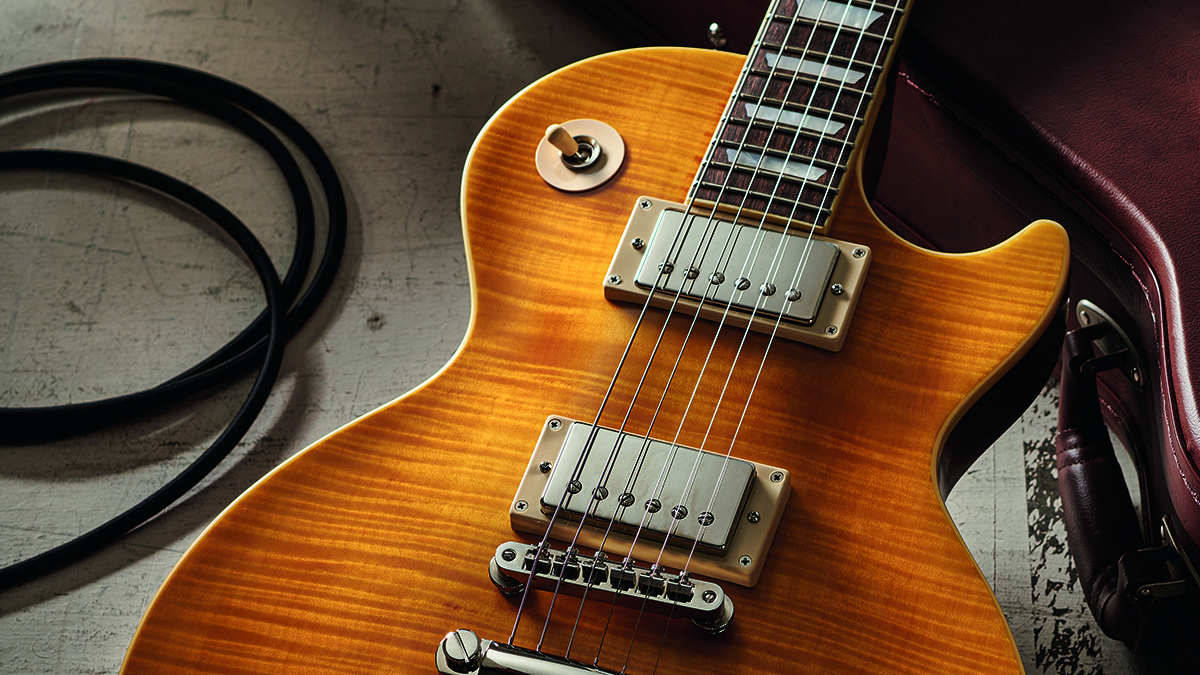“Top money buys forensically aged details and incredible craft, but you won’t necessarily hear £5k’s worth of difference in the sonic performance”: How close are Gibson's ’59 Burst replicas and their boutique rivals?
We put a Gibson Custom Shop Collector’s Edition ’59 Les Paul up against a Nik Huber Orca ’59 for the ultimate single-cut shootout

Recently, former Guitarist editor Neville Marten and I ventured down to World Guitars in Stonehouse, Gloucestershire. A haven of high-end lutherie, the store is one of the most welcoming places to try top-drawer PRS, Gibson, Fender and Tom Anderson electrics, to name but a few premium brands it stocks.
Intriguingly, the store also has quite a few Nik Huber electrics in at any one time, including – at the time of writing – three quite different examples of Nik’s stunning Orca ’59 model, which takes its inspiration, quelle surprise, from Gibson’s celebrated 1959-spec Les Paul Standard.
Nik Huber is no slavish copyist, however, but an extremely skilful and distinctive luthier, so the Orca ’59 has various refinements and finessed details that the original never had – while keeping the main ingredients intact.
Gibson, for its part, is the only company who can make a ’59 ’Burst reissue with the right name on the headstock – and that’s obviously a big deal if capturing the spirit of the originals is your aim.
As you’d expect, the Custom Shop is the home of Gibson’s highest-quality reissues, and World Guitars stocks many fine examples of its work, ranging from very mildly aged VOS ’Bursts to Collector’s Choice exotica that mimics every scratch and wear mark of a specific, celebrated ’Burst that is known to aficionados as a particularly good surviving original example.
Intrigued, Nev and I thought we’d take the chance to sit down with both the modern, evolved take on the sound of 1959 Les Pauls – as interpreted by Nik Huber through his Orca ’59s – and Gibson’s own high-end reissues, which set the benchmark for complete fidelity to the originals.
We had two examples of each: one ‘merely’ a high-end standard version of the model in question, and then one example that was really top of the tree in terms of craft, materials and cachet.
All the latest guitar news, interviews, lessons, reviews, deals and more, direct to your inbox!
Killer Wails
Here’s what we pulled down off the rack. On the Huber side, we grabbed a brand-new Nik Huber Orca ’59 in Nitro Semi-Gloss Tobacco Sunburst, plus something rather special: a Nik Huber World Guitars 5th Anniversary Orca ’59 Brazilian Limited, made back in 2014 to eponymously mark five years in business for World Guitars.
Decked out with eye-popping amounts of the coveted Brazilian rosewood – right down to control knobs and switch tips – and all, of course, fully certificated, this guitar represents as high a spec in the world of boutique inspired-by-’Burst single-cuts as you can really get.
In the Gibson corner, we selected a ’59 Les Paul Standard VOS (Vintage Original Sheen – Ed) Made 2 Measure Hand Selected Top. As our top-tier choice we picked out what Julian White of World Guitars said was one of the best-sounding single-cuts in the shop, a Collector’s Choice #45A 1959 Aged Les Paul ‘Danger ‘Burst’, created as an exact aged imitation of a specific surviving ’Burst that rejoices in that unusual moniker.

Which would our favourite be? Would the highest-tier guitars sound best? And would any of them match our mental template of what a ’59 Les Paul should really be? Without further ado, we plugged into a Matchless SC30 head and also a Fender black-panel Deluxe Reverb reissue combo and began to compare and contrast.
Picking up the poshest of the already impeccably turned out Hubers, we A/B’d it with the more prestigious of the two Gibsons, the Collector’s Choice replica of the improbably named ‘Danger Burst’, which we were told had its brace of Custombuckers wound hotter than usual to more closely imitate the specific guitar it is based on.

Sounds & Handling
Our first impressions were as follows. The Huber had abundant clarity, warmth and suppleness when played clean. Its expressive Häussel pickups were almost like playing a guitar with extra-fat, plummy single coils.
From a tactile point of view, its impeccable satin finish and beautifully refined details – such as the sculpted neck joint, which permitted easier access to the higher frets – made it seem effortlessly comfortable to play.
Turning to the ‘Danger Burst’, our impressions were also very enjoyable but quite different. Here, we found every scratch, nick and ding of the character of a 70-year-old electric guitar faithfully replicated, compared with the Huber’s silk-smooth sophistication.
The clean tones were decidedly on the woody and vintage side, not as crisply defined or versatile, debatably, as the Huber 5th Anniversary but firmly rooted in a past where Peter Green played melodies of haunting beauty on a Lester.

Not for the first time, Nev and I were struck by how different two guitars made with broadly the same general ingredients can be. And that impression only grew stronger when we added a bit of overdrive to the equation – now the Gibson’s woodier voice turned into beautiful splinters of jagged, vintage growl.
That ’60s British blues scene was just brought vividly and excitingly to life, exactly. The Huber, meanwhile, was more poised and composed and long-sustaining, almost Gilmourish. Boy, were these both great guitars. But we felt they would appeal to quite different players, or maybe the same player in quite different moods.
Time to pick up our ‘less expensive’ pair – though, of course, in this company, that was very much a relative term since the ’59 Les Paul Standard VOS Made 2 Measure Hand Selected Top is currently on sale for just over £5k. We now pitted that against the brand-new Huber Orca ’59, which may have lacked the Brazilian rosewood opulence of the 5th Anniversary model but lacked nothing in hand-crafted panache.

Plugging these in, we were greeted with some very interesting results. Firstly, the ‘standard’ Huber ’59, built far more recently than the 5th Anniversary, seemed to occupy a Goldilocks-like ‘just right’ mid-point between the clarity and poise of the Huber 5th Anniversary and the vintage charm of the ‘Danger Burst’ reissue by Gibson Custom. It had loads of smooth, bell-like sustain but some juicy, old-fashioned chewiness, too.
The Gibson ’59 Les Paul Standard VOS, meanwhile, was just a delight. Perhaps not quite as woody as the ‘Danger Burst’, it just had bags of characterful edge and snarl. It felt like everything a really good Les Paul of any era should be: stinging, singing, ringing. And while, cosmetically, it didn’t have the artful battle scars of the Collector’s Choice, it felt as comfortable as a favourite pair of worn-in jeans and played beautifully.
Thoughts & Conclusions
So what real-world conclusions were we able to draw from this rather gentrified dust-up between modern interpretations of the fabled 1959 Les Paul Standard and the faithful reissues?
the VOS sounded just fabulous, too. It’s hard to conceive of anyone feeling disappointed by its on-paper ‘lower spec’
Well, firstly, diminishing returns is a real thing. Some five grand or so separates the Gibson ’59 Les Paul Standard VOS we tried, which is already a very high-end guitar, and the Collector’s Choice ‘Danger Burst’. For sure, the detailing on the latter is insane and so evocative, as is its incredible sound, especially when driven. But the VOS sounded just fabulous, too. It’s hard to conceive of anyone feeling disappointed by its on-paper ‘lower spec’.
At this end of the market, top money buys forensically aged details, incredible craft and high-cachet extras, but you won’t necessarily hear £5k’s worth of difference in the sonic performance. I thought the ‘Danger Burst’ sounded best of the Gibsons, while Nev thought the VOS had the coolest tone. So any tonal differences between them are in the realm of subjectivity, not quantifiable ‘better’ or ‘worse’.
The same is true of the Orcas. Without any kind of disrespect to the frankly stunning 5th Anniversary, Nev and I probably enjoyed the standard, new Orca ’59 just as much if not slightly more.
We confess we don’t know how much or little Harry Häussel has evolved the construction of his PAF-like pickups in the years between the 5th Anniversary being built and today, but we really felt the touch of extra vintage vibe in the sound of the newer, less pricey Orca ’59 was welcome.
But here’s that reality check again – our ‘less expensive’ Orca is still £6,495! That’s a gulp-inducing amount of dosh for a new electric guitar, though we have no compunction in adding that the level of craft and sonic performance it embodies is exceptional.
But we must also say, in enjoying these incredible guitars, that it is not necessary to spend this much to get a nice Les Paul under your fingers. Epiphone’s Kirk Hammett ‘Greeny’ 1959 Les Paul Standard sounded and played absolutely great when we reviewed it a while back, for example, and that streets for just over a grand.
But if beautiful lutherie, exquisite details and small but significant incremental gains in performance are what you want, guitars at this level are where you’ll get it – if you can afford it.

The second realisation we had is that, despite having the same classic sound as a template, the character of the Gibsons and the Hubers was distinctively different. The Gibsons really had that old-guitar vibe and mid-’60s Blues Invasion sound.
The Hubers had it, too, but in a subtly more contemporary and finely finessed guise. One might say they offered stellar performance with vintage roots. In other words, you really would have to try both to see which suited you best, especially at these prices. As you’d expect with instruments of this quality, there were no bad choices, only different kinds of great – but those differences could mean a lot to you as an individual player.
Above all, if you were lucky enough to be in the market for a guitar like one of these, we’d say it’s essential to play all the guitars you like the look of plus a few you maybe weren’t considering. That ‘click’ moment when you really take to a guitar only happens by playing it, not just admiring its looks or its spec from afar.
Jamie Dickson is Editor-in-Chief of Guitarist magazine, Britain's best-selling and longest-running monthly for guitar players. He started his career at the Daily Telegraph in London, where his first assignment was interviewing blue-eyed soul legend Robert Palmer, going on to become a full-time author on music, writing for benchmark references such as 1001 Albums You Must Hear Before You Die and Dorling Kindersley's How To Play Guitar Step By Step. He joined Guitarist in 2011 and since then it has been his privilege to interview everyone from B.B. King to St. Vincent for Guitarist's readers, while sharing insights into scores of historic guitars, from Rory Gallagher's '61 Strat to the first Martin D-28 ever made.



